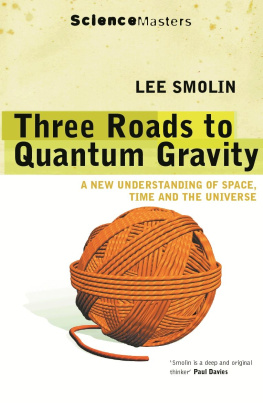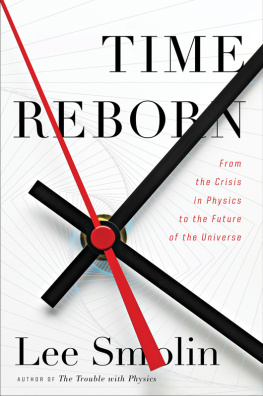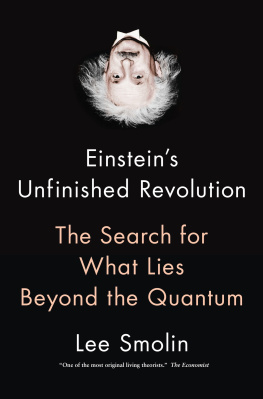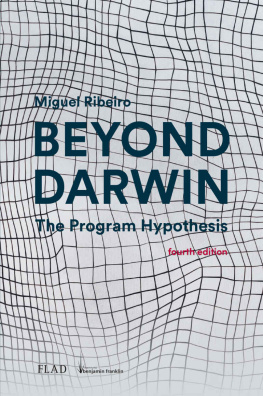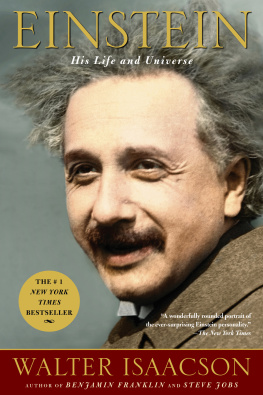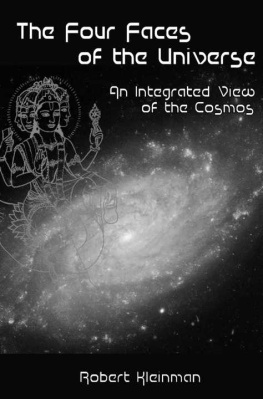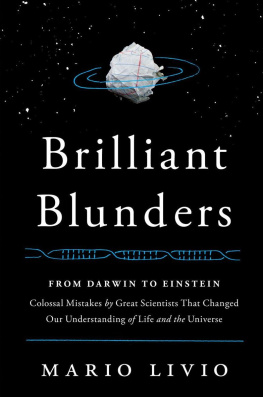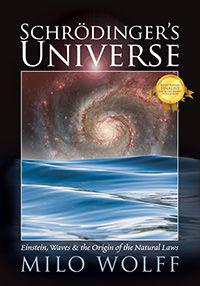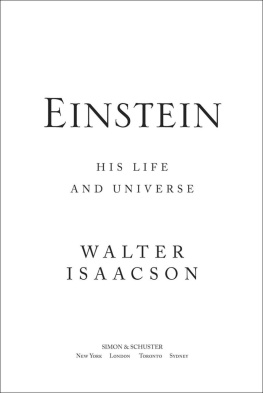Lee Smolin - The Life of the Cosmos
Here you can read online Lee Smolin - The Life of the Cosmos full text of the book (entire story) in english for free. Download pdf and epub, get meaning, cover and reviews about this ebook. year: 1997, genre: Religion. Description of the work, (preface) as well as reviews are available. Best literature library LitArk.com created for fans of good reading and offers a wide selection of genres:
Romance novel
Science fiction
Adventure
Detective
Science
History
Home and family
Prose
Art
Politics
Computer
Non-fiction
Religion
Business
Children
Humor
Choose a favorite category and find really read worthwhile books. Enjoy immersion in the world of imagination, feel the emotions of the characters or learn something new for yourself, make an fascinating discovery.

- Book:The Life of the Cosmos
- Author:
- Genre:
- Year:1997
- Rating:4 / 5
- Favourites:Add to favourites
- Your mark:
- 80
- 1
- 2
- 3
- 4
- 5
The Life of the Cosmos: summary, description and annotation
We offer to read an annotation, description, summary or preface (depends on what the author of the book "The Life of the Cosmos" wrote himself). If you haven't found the necessary information about the book — write in the comments, we will try to find it.
The Life of the Cosmos — read online for free the complete book (whole text) full work
Below is the text of the book, divided by pages. System saving the place of the last page read, allows you to conveniently read the book "The Life of the Cosmos" online for free, without having to search again every time where you left off. Put a bookmark, and you can go to the page where you finished reading at any time.
Font size:
Interval:
Bookmark:
THE LIFE of the COSMOS
Lee Smolin

Oxford University Press
Oxford New York
Athens Auckland Bangkok Bogot Buenos Aires Calcutta
Cape Town Chennai Dar es Salaam Delhi Florence Hong Kong Istanbul
Karachi Kuala Lumpur Madrid Melbourne Mexico City Mumbai
Nairobi Paris So Paulo Singapore Taipei Tokyo Toronto Warsaw
and associated companies in
Berlin Ibadan
Copyright 1997 by Lee Smolin
First published by Oxford University Press, Inc., 1997
First issued as an Oxford University Press paperback, 1998
Oxford is a registered trademark of Oxford University Press
All rights reserved. No part of this publication may be reproduced,
stored in a retrieval system, or transmitted, in any form or by any means,
electronic, mechanical, photocopying, recording, or otherwise,
without the prior permission of Oxford University Press.
Selection from No Matter, Never Mind copyright 1974 Gary Snyder.
Used by permission of New Directions Publishing Corporation.
Selection from Fireflies reprinted with permission of Simon & Schuster
from Fireflies by Rabindranath Tagore. Copyright 1928 by
Macmillan Publishing Company, renewed, 1956 by Rabindrath Tagore.
Selection from Dialogue Concerning the Two Chief World Systems
by Galileo Galilei copyright Regent of the University of California Press.
Selection from The Blind Walchmakerby Richard Dawkins
copyright 1987.
Selection from The Monadology of Leibniz , translated by Roger Ariew
and Daniel Garber, in G.W. Leilmiz , Hackett Publishing, copyright 1989.
Selection from The Statesman , by Plato, translated by J.B. Skemp,
copyright 1992, Hackett Publishing.
Selection from interview with His Holiness the Dalai Lama
reprinted from Parabola , Volume xv, No. 1, spring 1990.
Library of Congress Cataloging-in-Publication Data
Smolin, Lee, 1995
The life of the cosmos / by Lee Smolin.
p. cm. Includes bibliographical references and index.
ISBN-13 978-0-19-512664-8 (Pbk)
ISBN-13 978-0-19-510837-8 (Cb)
1. Cosmology. I. Title
QB981.S694 1996
523.1dc20
96-27912
10
Printed in the United States of America
on acid-free paper
Dedicated to
Laura Kuckes
19611990
Physician, playwright, friend,
who inspired me to write this book.
THE LIFE of the COSMOS
This interconnection (or accommodation)
of all created things to each other ,
brings it about that each simple substance
has relations that express all the others ,
and consequently ,
that each simple substance
is a perpetual, living mirror of the universe .
Just as the same city
viewed from different directions
appears entirely different
and, as it were, multiplied perspectively ,
in just the same way
it happens that ,
because of the infinite multitude of simple substances ,
there are, as it were, just as many different universes ,
which are, nevertheless ,
only perspectives on a single one ,...
And this is the way of obtaining as much variety as possible ,
but with the greatest order possible ,
that is, it is the way of obtaining as much perfection as possible .
G. W. Leibniz, The Monadology, 5658, 1714
A s the story is told, Nicolaus Copernicus received the first copy of his first and only book as he lay dying in the tower of the castle in northeastern Germany where he had lived and served as Deacon for the last half of his life. The book was titled Revolutions of the Spheres and it was, in time, to inspire such a radical shift of the world view of both the erudite and the ordinary that its title has since become our word for radical political and philosophical change. In this book, Copernicus expounded the astonishing idea that the Sun, and not the Earth, was at the center of the Universe, and that much of the mystery of the motions of the Sun, stars and planets could be explained by this simple hypothesis.
The legend of Copernicus, and the revolution that followed, has servedmore than any other episodeto define and explain science, its power and its role in European, and now world, civilization. Like most legends, it contains shades of truth, and shades of distortion and misinformation. For example, while it is true that Copernicus did delay publication of his book as long as he could, it is not true that he did this because of real, or imagined, fear of prosecution by the Catholic Church. The church, which was his sole employer during his life, had supported him in his work; even a Pope had expressed interest in these new ideas. It is more likely that this reluctant revolutionary was simply afraid of provoking controversy and public ridicule for advocating a view that went against both common sense and established science.
Whatever the truth might be, what we can be certain that Copernicus would have been even more reluctant had he known how different a universe from the one he inhabited would arise from the revolutions of his book. For, apart from exchanging the role of the Sun and the Earth, most of the steps we associate with the shift in world view, which we call the Copernican Revolution, were not even mentioned in his book. For Copernicus, and even for Kepler and Galileo, the Universe was finite and spherical. It was only large enough to contain the orbits of the six known planets, and the distant stars were lights affixed to the outer sphere that was its final boundary. There is no evidence that any of these, the main protagonists of the revolution, ever doubted that the universe had been created six thousand years earlier by God, who waited and watched just outside of that stellar sphere.
The more radical notions that led to our modern world view came after Copernicus. It was the mysterious monk turned mystic, Giordano Bruno, who proclaimed that space is infinite, that the stars are other suns, and that around them are other planets on which live other peoples. It was for these and other heresies, much more threatening to the authority of the church than the rather minor question of whether to reinterpret scripture to allow for the Earths motion, that he was burned alive in the Campo dei Fiori in Rome in 1600. Copernicus also had no notion of the central ideas that, over the next century and a half, would shape a new view of the universe: that everything in the world, on the Earth and in the heavens, is made of atoms; and that all motion is governed by simple and universal laws. Indeed there is much more distance between the new picture of the universe as we find it finally synthesized in Newtons great book, the Principia , and Copernicuss work published almost one hundred and fifty years earlier, than there was between Copernicus and his contemporaries. Copernicus started a revolution, but it is doubtful whether he would have approved of the result.
A second great revolution in physics and cosmology was begun in the opening years of this century. It was launched with the introduction of relativity and quantum theory, each of which breaks decisively with the world view of Newtonian physics. These two theories were put in final form in 1916 and 1926, respectively. However, in spite of the fact that the basic formulations of relativity and quantum theory have not been modified for more than sixty years, the revolution in world view which they make necessary is not yet over. The reason for this is easy to see. The Aristotelian world view, which the Copernican revolution overthrew, described a single, unified theory of nature which could account for everything that happened, or might happen, in the universe then known to human beings. It explained what space and time are, what the shape of the cosmos is, what it contains, and how and why change takes place. The Newtonian world view, which was the result of the Copernican revolution, was also a comprehensive, unified theory, which applied to everything in the cosmos as it was then conceived. However, if the Newtonian world view has been overthrown in the 20th century, what has replaced it is not one new theory, but two. These two theories have been extremely successful in explaining both old and new phenomena, but neither of them can claim to be universal. The reason is, in each case, the existence of the other. Quantum theory has yet to successfully encompass the phenomena of gravitation, and Einsteins theory of relativity can only explain gravitation by ignoring quantum theory and treating matter as if Newtons world view still held.
Next pageFont size:
Interval:
Bookmark:
Similar books «The Life of the Cosmos»
Look at similar books to The Life of the Cosmos. We have selected literature similar in name and meaning in the hope of providing readers with more options to find new, interesting, not yet read works.
Discussion, reviews of the book The Life of the Cosmos and just readers' own opinions. Leave your comments, write what you think about the work, its meaning or the main characters. Specify what exactly you liked and what you didn't like, and why you think so.


